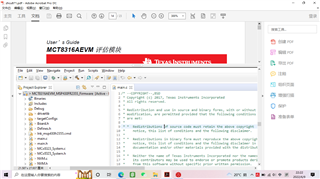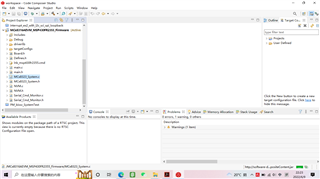Other Parts Discussed in Thread: MSP430FR2355, , MCF8316AEVM, MCX8316AEVM, MCF8316A
Hi team,
Here's an issue from the customer may need your help:
As per the MCT8316AEVM User's guide, the firmware code project for the monolithic device communicating with the upper computer and 8316 is MCT8316AEVM_MSP430FR2355_Firmware:

However, this project is not available in the product development resources of the MCT8316A:

1) Could you help confirm if this project firmware for the 430 monolithic the MCT8316AEVM? And what is the MCx8323 in this project?
Since the customer is not able to purchase MCT8316AEVM, they are wondering whether the below method is possible:
To initialize the MCT8316AEVM_MSP430FR2355_Firmware_GUI on the MSP430FR2355 LaunchPadTM development kit, And replace the 32.768 KHz of the 2355 on the LaunchPad with 4.0 MHz because the 2355 external crystal on the MCT8316AEVM is 4.0 MHz.
Could you help check this case? Thanks.
Best Regards,
Cherry

